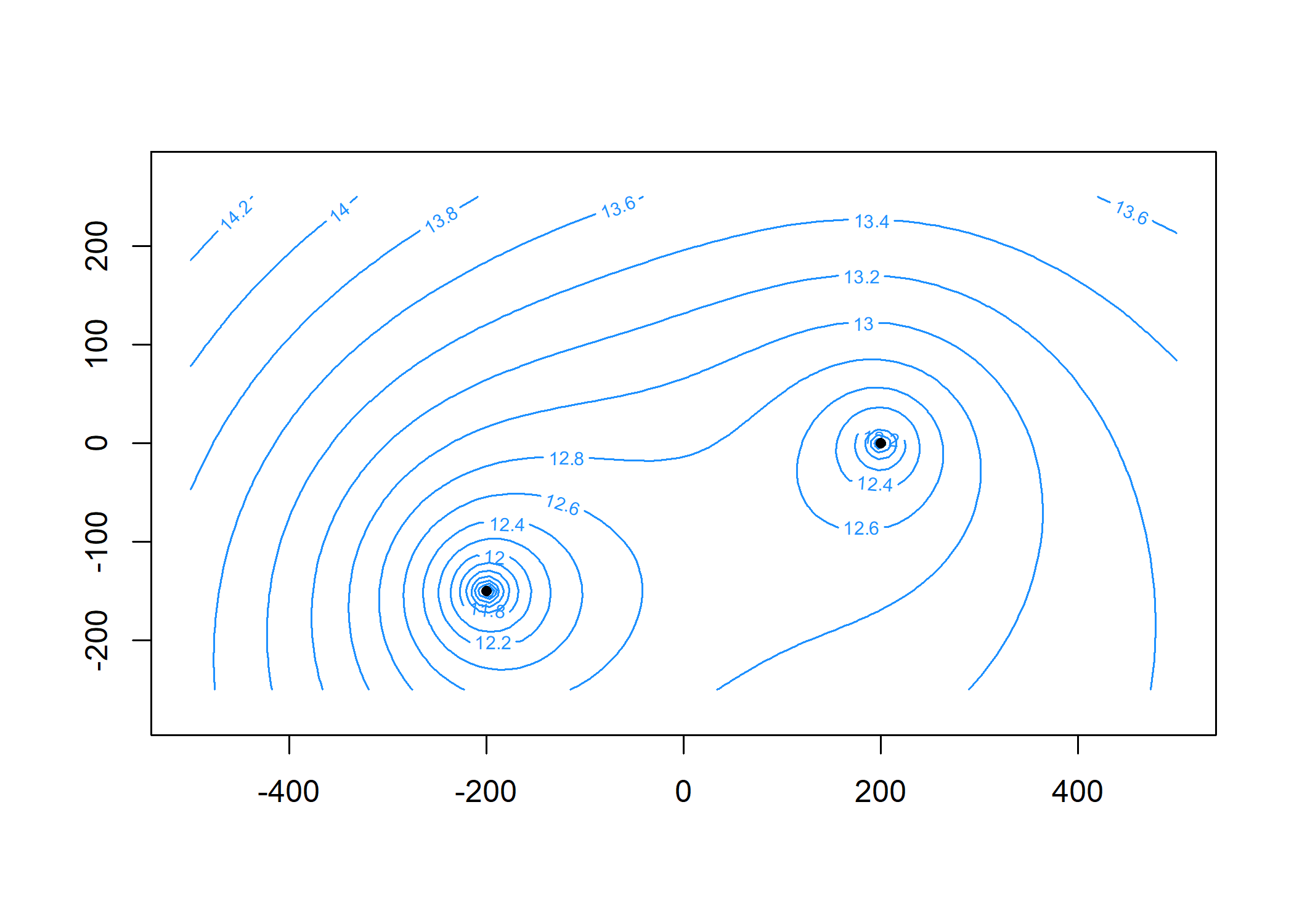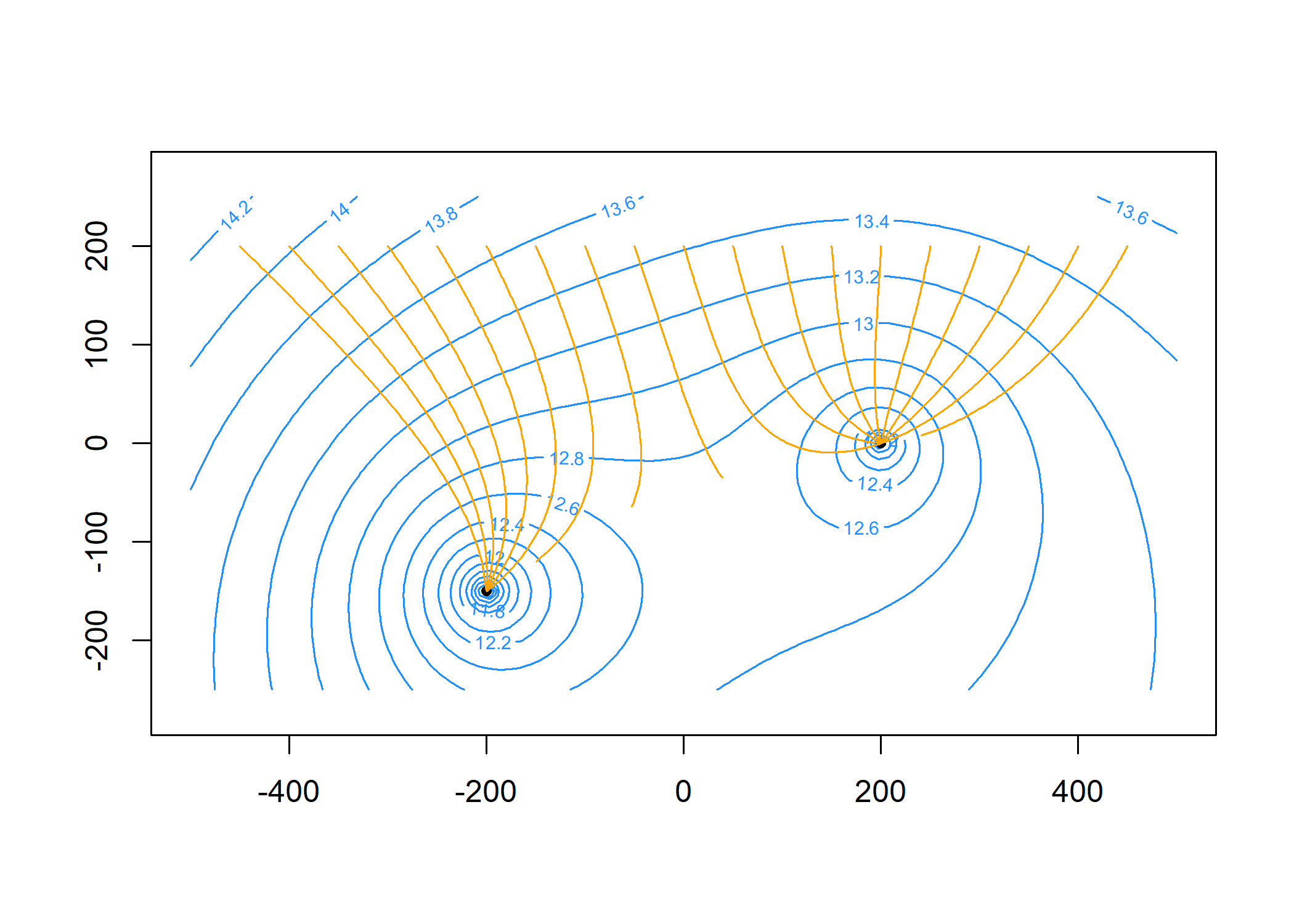
The hardware and bandwidth for this mirror is donated by METANET, the Webhosting and Full Service-Cloud Provider.
If you wish to report a bug, or if you are interested in having us mirror your free-software or open-source project, please feel free to contact us at mirror[@]metanet.ch.

raem is an R package for modeling steady-state,
single-layer groundwater flow under the Dupuit-Forchheimer assumption
using analytic elements.
To install the released version:
install.packages("raem")The development version of raem can be installed from GitHub with:
# install.packages("devtools")
devtools::install_github("cneyens/raem")The package documentation can be found at https://cneyens.github.io/raem/.
Construct an analytic element model of an aquifer with uniform background flow, two extraction wells and a reference point.
Specify the aquifer parameters and create the elements:
library(raem)
# aquifer parameters ----
k = 10 # hydraulic conductivity, m/d
top = 10 # aquifer top elevation, m
base = 0 # aquifer bottom elevation, m
n = 0.2 # aquifer porosity, -
hr = 15 # head at reference point, m
TR = k * (top - base) # constant transmissivity of background flow, m^2/d
# create elements ----
uf = uniformflow(TR, gradient = 0.001, angle = -45)
rf = constant(xc = -1000, yc = 0, hc = hr)
w1 = well(xw = 200, yw = 0, Q = 250)
w2 = well(xw = -200, yw = -150, Q = 400)Create the model. This automatically solves the system of equations.
m = aem(k = k, top = top, base = base, n = n, uf, rf, w1, w2)Find the head and discharge at two locations:
x = -200, y = 200 and x = 100, y = 200. Note
that there are no vertical flow components in this model:
heads(m, x = c(-200, 100), y = 200)
#> [1] 13.64573 13.33314discharge(m, c(-200, 100), 200, z = top) # m^2/d
#> Qx Qy Qz
#> [1,] 0.15028815 -0.2923908 0
#> [2,] 0.06041242 -0.3347206 0Plot the head contours and element locations. First, specify the contouring grid:
xg = seq(-500, 500, length = 100)
yg = seq(-250, 250, length = 100)Now plot:
contours(m, xg, yg, 'heads', col = 'dodgerblue', nlevels = 20)
plot(m, add = TRUE)
Compute particle traces starting along y = 200 at 20
intervals per year for 5 years and add to the plot:
paths = tracelines(m,
x0 = seq(-450, 450, 50),
y0 = 200,
z0 = top,
times = seq(0, 5 * 365, 365 / 20))
plot(paths, add = TRUE, col = 'orange')
These binaries (installable software) and packages are in development.
They may not be fully stable and should be used with caution. We make no claims about them.